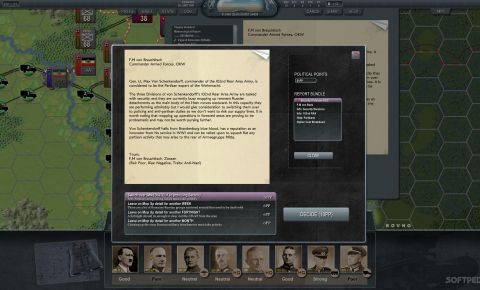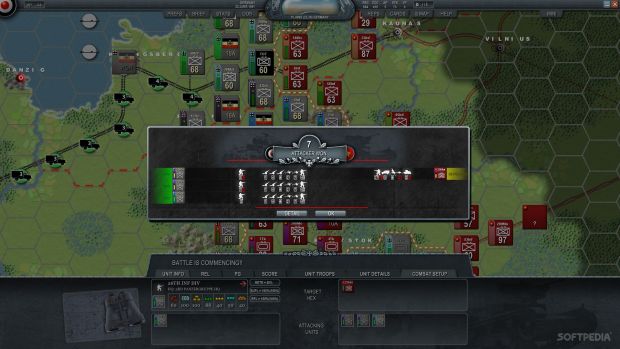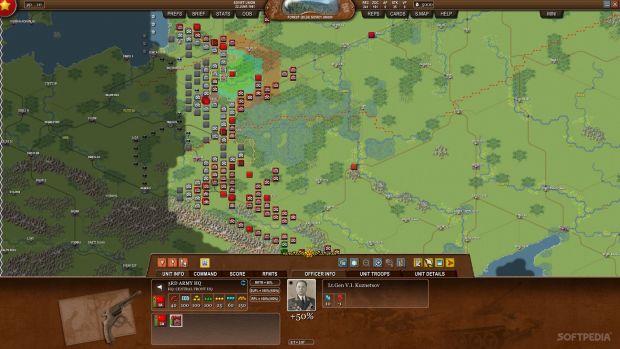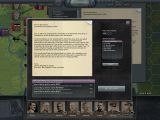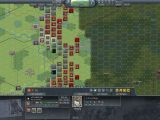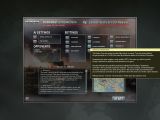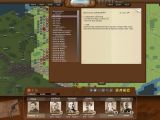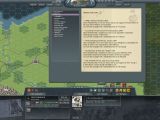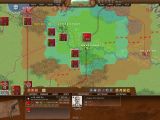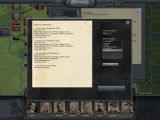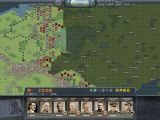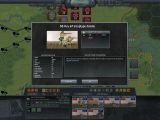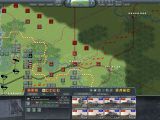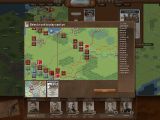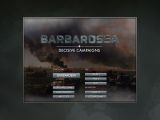Decisive Campaigns: Barbarossa is a title about the pressure and problems that leaders experience, a wargame that understands that dealing with people is as important in a time of war as delivering the guns and tanks that an army requires is.
The title features a traditional wargame layer, and the mechanics that it uses are calibrated to appeal to fans of the series, delivering plenty of realism while also making sure that gamers can play a turn in about ten minutes.
But the biggest innovation of the title is a full political system that simulates how two characters, Franz Halder and Stalin, deal with the major problems that come with a command position, each of them facing a variety of factors that can make their forces either ineffective or uniquely suited to deliver glorious victories.
Decisive Campaigns: Barbarossa is developed by VR Games, being the third title they have created using the same core ideas after Warsaw to Paris and Case Blue, and published by Matrix Games, offered only on the PC.
Story
Decisive Campaigns: Barbarossa is a game about World War II, which is probably the most explored section of history in the video game space, but this is one of a limited number of experiences that manage to introduce new elements to the relatively familiar story.
Gamers can control either German or Russian forces starting June 22 of 1941, when the Reich decides to launch Operation Barbarossa to secure territory up to the Urals and destroy the Communist country with which it was previously allied.
The initial setup is a historical one, and gamers will have to play very clear roles rather than become a nameless supreme entity, as they do in other wargames.
If they choose to play the German side, they will take on the role of Franz Halder, the Chief of the General Staff of the Army, who dealt with much of the planning effort for Barbarossa, while for the Russians, they become Stalin himself, personally handling the defensive effort.
Both these individuals needs to deal with a wide array of narrative-driven events and handle relationships with other characters, ranging from Hitler and Gorin to the two generals who handle logistics (they sometimes are more important to the war effort than the Fuhrer).
Halder is the most interesting of the two for two main reasons: he was never the most powerful figure involved with the invasion, and he has to balance carefully wildly divergent interests at times to make it a success.
Stalin can use action cards to direct the way Russia should absorb the blows launched by the Germans and then find ways to repulse them, which means he is more direct and decisive in his actions but has to deal with a series of initial defeats.
Decisive Campaigns: Barbarossa is well written and varied when it comes to reports and political choices, although some of the supporting characters could have used a little more detail when it comes to their personalities.
Gameplay
Decisive Campaigns: Barbarossa is a wargame with great twists and offers a unique take on one of the biggest moments of World War II, the attack on Russia that Germany and its allies launched in the middle of 1941.
Each unit has a set of action points that allow it to move and to attack enemies, the hexes on the map represent 30 kilometers of terrain from one edge to another, and the intervals between turns are four days.
Divisions are represented on the map, grouped into armies and designed to move and work together to achieve objectives for each of the three theaters, with air power and artillery represented via cards that can be played to enhance some elements of the offensive or to stop an enemy move.
Decisive Campaigns: Barbarossa tracks vehicle durability, fuel consumption, supply routes, weather, terrain and more, all elements that deliver realism and constrain the choices a player can make.
Each army has a stance that the player can manage, and for each battle, gamers need to decide which units take part while considering wider strategic objectives they are planning to hit.
The Germans favor a fast maneuver warfare, using infantry to hold an open space and panzers to create encirclements and to secure important areas, while the Soviets are initially better served by retreats, local counterattacks and, later, by the use of new divisions to win back territory.
The core wargame element of Decisive Campaigns: Barbarossa is solid but contains little in the way of innovation, and some options to delegate or move units in a coordinated manner would be welcome.
VR Games compensates for the limits of the strategic mechanics by adding a new and great political system that changes how the player approaches the experience.
“At the start of each new turn, gamers get a range of situations to deal with, and they need to choose whether they want to spend political capital to get their way and maximize resources or if they let something slide even if it might affect the campaign later on.”
Halder can have a hard time getting enough fuel or new divisions if he angers Hitler (worse outcomes are possible), but at the same time, he can hobble himself by not listening to the requests of the leaders of his Army Groups.
Navigating decisions is a constant minefield and can change the way the player moves divisions around or even the strategic objective that he aims to achieve.
Stalin also has a hard time, but his biggest problem is the weakness of his army and officers and the fact that his initial policy of no retreat is the worst possible idea, given the way the Germans are fighting.
His paranoia and the fact that almost every solid battlefield commander is also seen as a threat do not help matters.
Zhukov and Khrushchev are his most important tools, deployed to control those army headquarters where the subordinates fail to act, and gamers can also change the leaders of the three fronts under certain conditions.
Decisive Campaigns: Barbarossa allows players to turn off all the political elements if they want to and play the game as a classic wargame, focusing just on combat and supply concerns.
The title includes just one big campaign, but there are enough setup options for players to tweak to guarantee a lot of replay value even for those who manage to master the core challenge for both the Germans and the Russians.
Graphics and audio
Decisive Campaigns: Barbarossa uses a classic wargame structure, which means that there's no eye candy, other than some of the portraits and art, and it might be a little hard for newcomers to adjust to the way the game delivers information, at first.
There's a lot of data to take in, and plenty of details to keep track of, and the developers at VR Games have managed to create an interface that makes it relatively easy to move from the political to the military side and to keep track of the action.
Decisive Campaigns: Barbarossa has a soundtrack that uses classic orchestral pieces to underline the drama of World War II, which manages to also lend dramatic weight to some of the apparently small political choices that the game generates.
Multiplayer
Decisive Campaigns: Barbarossa allows gamers to play against other humans using the Play by Email system, and it's a good idea to have friends that are as passionate about the game before running one because it requires a solid time and attention commitment.
The Good
- Political decisions and effects
- Focus on personalities and relationships
- Offers new take on World War II
The Bad
- Has a learning curve
- Some extra automation is needed
Conclusion
The core systems created by VR Games work well together and manage to show players the way a successful leader needs to combine good and flexible plans, decisive action when it comes to combat and careful political dealings.
It's not easy to engineer a successful drive to Moscow or a good defense of the Motherland even on normal difficulty, but the challenge never feels unfair, and it's a joy to constantly tweak a formula, try to apply it and then repeat the process until victory is at hand.
The strategy layer can become a little dry and repetitive at times, but the political layer more than makes up for that and provides a level of fun that no recent wargame has managed to deliver.
Decisive Campaigns: Barbarossa can be a little hard to understand for newcomers to the genre, which is a pity, given that the game deserves a wider audience than hardcore grognards, so everyone who picks it up needs patience and time to fully appreciate the experience.
The development team has put together a solid manual, 320 pages long, complemented by videos that are available during the actual campaign, which should be consulted either before playing or as soon as the player finds something that they do not understand.
VR Games has created a true gem, and I am eagerly awaiting to see how they can improve the overall experience via patches to make Decisive Campaigns: Barbarossa a must-play for all lovers of history, regardless of their experience with the wargame genre.
 14 DAY TRIAL //
14 DAY TRIAL // 